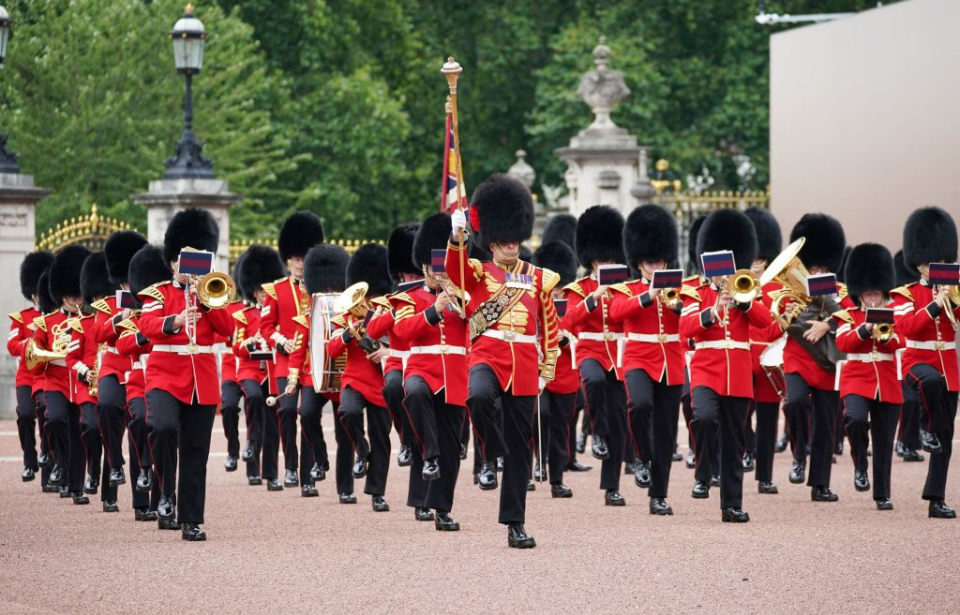Written by Joseph Williams and Clare Fitzgerald.
Millions flock to Buckingham Palace each year to witness the famous Changing of the Guard. The majority are awed by the pageantry, but very few know the history of the time-honored tradition or that of the King’s Guard, which dates back centuries.
The King’s Guard is introduced
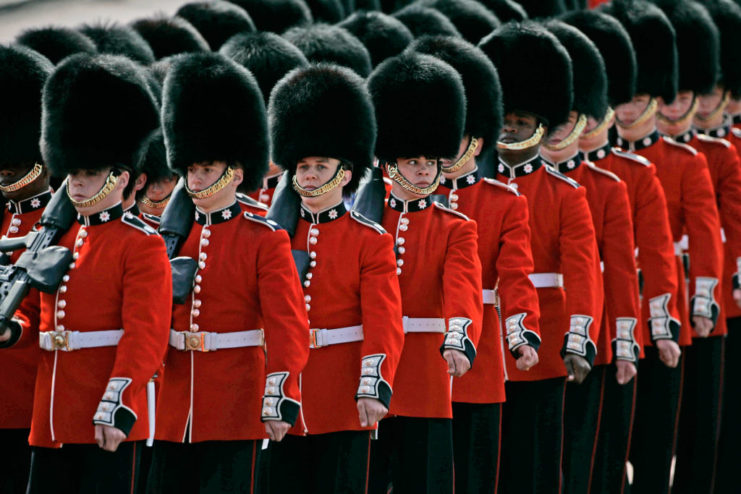
Soldiers have protected Britain’s monarchs since the reign of King Henry VII, who saw a need to restore the authority of the Royal Family following the 1455-87 War of the Roses. The Guards Regiments were introduced in the mid-1600s and are among the oldest units of the British Army. Their soldiers have fought in almost every major conflict Britain has been involved in since the 17th century.
From the Palace of Whitehall to Buckingham Palace
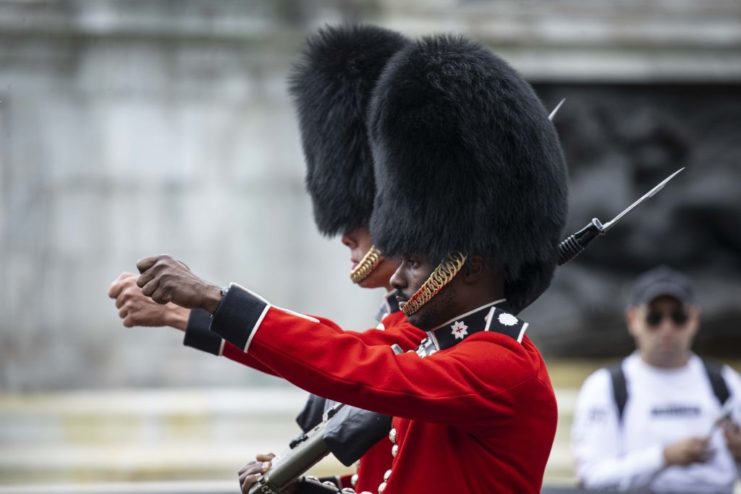
The first Changing of the Guard ceremonies took place at the Palace of Whitehall and were moved to St. James’ Palace when the Royal Court relocated there in 1689. The ceremonial event found its permanent home at Buckingham Palace when Queen Victoria made her court there in 1837.
While the Queen’s Guard remained at St. James’ Palace, a detachment was sent to protect Buckingham Palace.
What military regiments make up the King’s Guard?
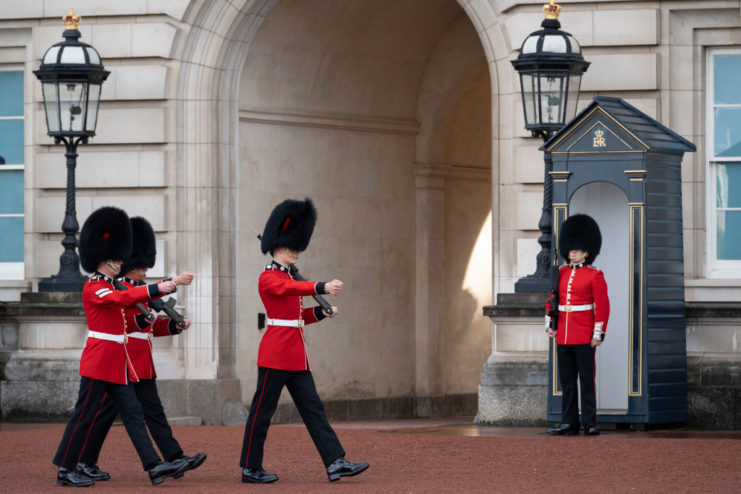
Those making up the King’s Guard are members of the Foot Guards of the Household Division, which includes the Grenadier Guards, the Coldstream Guards, the Scots Guards, the Irish Guards and the Welsh Guards. While they might look similar, each division sports different colored plumes, buttons and badges.
It’s also important to note that these guards are fully-functional military units and not simply ceremonial. Their automatic weapons are functional, but aren’t typically loaded. As well, any military unit within the British Commonwealth can act as the King’s Guard, meaning the likes of the Gurkhas and the Royal Marines have taken part in the ceremony at one point or another.
The sentinels work in shifts
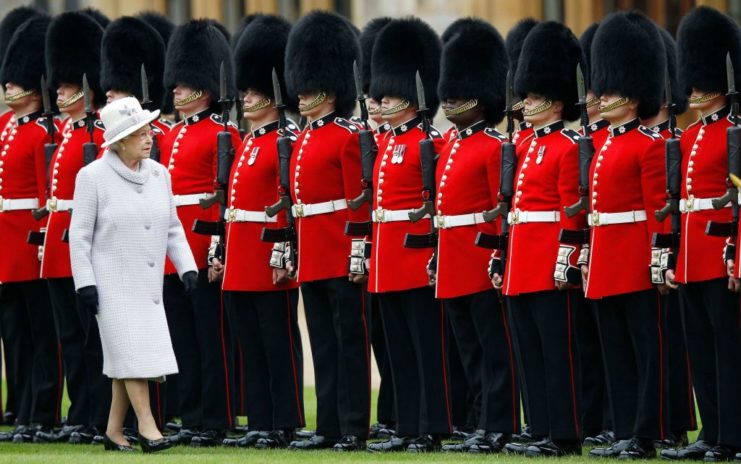
A regiment of guards will typically stand watch for between 24 and 48 hours, with two sentries standing as sentinels in two-hour shifts. They then get four hours off. Sentries are supposed to stand at “attention” every 10 minutes and march across their post in about 20 paces. Once this has been repeated between four and five times, the sentinel will halt and return to how they were standing prior.
Sentries are not allowed to “stand easy” or eat while they are stationed at their posts. According to the orders read out to them at the beginning of their duty, the list of activities they’re not allowed to partake in include sleeping, smoking, sitting down or lying down.
An interesting fact about the Guards standing watch outside Buckingham Palace is that their numbers change depending on whether the reigning monarch is present within the palace. If the King is there, the Royal Standard will fly high and the amount of sentries is increased.
What happens during the Changing of the Guard?
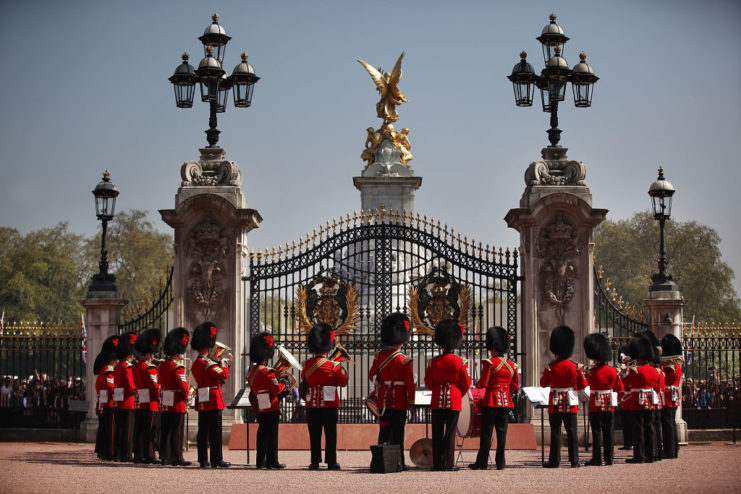
The Changing of the Guard is, in effect, the Old Guard from St. James’ Palace and Buckingham Palace being relieved by the New Guard from Wellington Barracks. The ceremony is intended to be a reminder of just how close the relationship is between the monarchy and Britain’s Armed Forces.
Prior to starting, the St. James’ Palace detachment lines up at Friary Court for an inspection by the captain of the King’s Guard. This is followed by a similar inspection of the Old Guard at Buckingham Palace. A military band signals the start of the New Guard’s march toward the Old Guard at exactly 11:00 AM, after which both Guards “present arms” and ceremoniously hand over the keys to Buckingham Palace. This represents the transfer of responsibility for protecting the palace.
The transfer of the keys signals the beginning of marching procedures. After the original sentries return to complete the Old Guard, a bugler lets the Director of Music know the handover is complete. This is followed by the Guards being brought to “attention” and the Old Guard beginning its march to Wellington Barracks.
The Changing of the Guard ceremony takes place at a number of other Royal properties, including Windsor Castle and the Tower of London. It even occurs at the Palace of Holyroodhouse in Edinburgh, Scotland.
The Changing of the Guard has evolved over the years
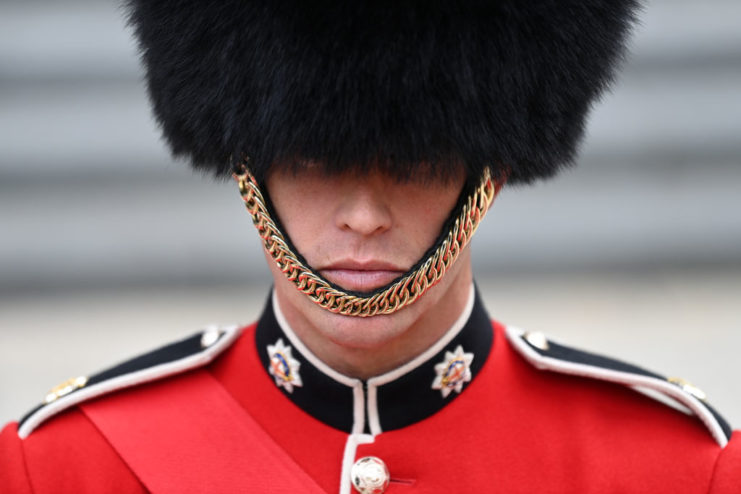
The Changing of the Guard ceremony has evolved a lot throughout history, with the spectacle as we know it today having only been introduced in the late 1800s. For many, one of the most noticeable changes has to do with the tall hats members of the King’s Guard wear with their red coats, both while standing at their post and during the ceremony.
More from us: Queen Elizabeth II Met with a Number of World Leaders During Her Reign
The bearskin hats donned by the Guard made their first appearance during the 18th century, as a way of giving members a more menacing look. The gold strap that rests just below the mouth wasn’t designed to keep the hat on their head – it was intended to protect the face. Despite having fallen out of fashion for every day military use, they have been retained for ceremonial purposes.
